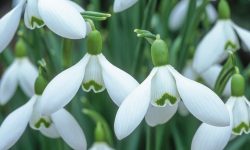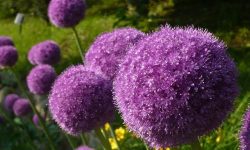Calla lilies are beloved for their elegant trumpet-shaped blooms and lush green foliage. Whether grown indoors in decorative pots or placed outdoors in containers or garden beds, calla lilies add sophistication to any space. But one of the most frequently asked questions by plant lovers is: How long will a potted calla lily last indoors or outdoors? The answer depends on various factors including plant care, environmental conditions, and whether the plant is being grown as a perennial or annual.
In this detailed guide, we’ll explore the lifespan of potted calla lilies in both indoor and outdoor environments, how to extend their longevity, tips for reblooming, and expert care instructions to ensure your lilies thrive for as long as possible.
Understanding the Lifespan of Calla Lilies

What Is the Natural Lifecycle of a Calla Lily?
Calla lilies (Zantedeschia spp.) are herbaceous perennials native to southern Africa. In their natural environment, they go through a growth cycle that includes a period of active growth, blooming, and dormancy. The plant grows from a rhizome, and this underground structure allows it to return each year, provided the conditions are right.
When grown in pots, calla lilies usually bloom once per growing season. Each individual flower lasts 1–2 weeks, but the entire blooming period of the plant can span 6 to 12 weeks depending on the care and environment.
Annual vs. Perennial: How It Affects Longevity
In colder regions where winters are harsh (USDA Zones 7 and below), calla lilies are often treated as annuals because they do not survive frost unless brought indoors. However, in milder climates (Zones 8–10), or when overwintered properly indoors, calla lilies can be grown as perennials, allowing them to come back and bloom year after year.
So when asking how long will a potted calla lily last, the answer differs: they can live a few months as an annual in cold climates or several years when grown perennially in proper conditions.
How Long Will a Potted Calla Lily Last Indoors?
Indoor Blooming Duration
When grown indoors, a potted calla lily typically produces flowers for 6 to 8 weeks. If conditions are ideal — plenty of indirect light, adequate watering, and the right temperature — the plant may even bloom for up to 12 weeks. However, once blooming ends, the foliage will begin to die back as the plant enters dormancy.
Total Indoor Lifespan
Indoors, a potted calla lily can live for many years if properly cared for. Even though the visible part of the plant may die back after the blooming season, the rhizome remains alive and can be induced to rebloom in the following season. With annual dormancy and repotting, a calla lily can thrive for 5 to 10 years or more in a pot indoors.
How to Extend Indoor Lifespan
To help your indoor calla lily last longer:
-
Place it in bright, indirect light (not direct sun).
-
Maintain room temperatures between 60–75°F (15–24°C).
-
Water regularly, keeping the soil moist but not soggy.
-
Provide humidity if the air is dry.
-
After blooming, allow the plant to enter dormancy and store it in a cool, dark place.
How Long Will a Potted Calla Lily Last Outdoors?
Outdoor Blooming Duration
When grown in pots outdoors, calla lilies bloom from late spring to early summer and can continue flowering for up to 8–10 weeks. In some warmer regions, they may bloom intermittently into late summer. The outdoor blooming season is slightly longer due to natural lighting and air circulation.
Outdoor Life Expectancy
Outdoors, a potted calla lily can last from spring to the first frost if grown as an annual. However, in frost-free climates or when overwintered indoors, the rhizomes can be reused annually, allowing the same plant to live and bloom for multiple seasons.
If you’re growing calla lilies in USDA Zones 8 to 10, they can stay outdoors year-round and will regrow each season, living for 5 to 10 years or more. In colder climates, you’ll need to bring the pots inside during winter to keep the rhizomes alive.
Tips for Outdoor Longevity
To help your potted calla lily thrive outdoors:
-
Place in partial shade or areas with filtered sunlight.
-
Use a well-draining potting mix and containers with drainage holes.
-
Water consistently, especially during dry spells.
-
Fertilize with a balanced, water-soluble fertilizer every 2–3 weeks during the growing season.
-
Before winter, bring the pots indoors or dig up and store the rhizomes in a cool, dry location.
Key Factors Affecting How Long a Potted Calla Lily Will Last
Temperature and Climate
Calla lilies thrive in mild temperatures between 60°F and 75°F. High heat or cold snaps can stress the plant and shorten its lifespan. If kept indoors, avoid placing the pot near heaters or air conditioners. Outdoors, protect it from frost and extreme sun.
Soil and Drainage
These plants require moist, well-draining soil. Standing water leads to root rot, one of the most common causes of premature death in calla lilies. Use containers with holes and avoid overwatering.
Light Requirements
Indoors, calla lilies prefer bright, indirect sunlight. Outdoors, they do well in partial shade, especially in hotter regions. Too little light will reduce blooming, while too much sun can scorch the leaves.
Humidity and Air Circulation
Calla lilies enjoy moderate humidity. If grown indoors, dry air can cause browning tips. Outdoors, good air circulation helps prevent fungal diseases like powdery mildew.
Pest and Disease Management
Common pests like aphids, spider mites, and fungal gnats can harm potted calla lilies, reducing their health and longevity. Keep an eye on the foliage and treat early with insecticidal soap or neem oil.
Reblooming Calla Lilies: Can You Make Them Flower Again?
Dormancy Period
After the blooming season, calla lilies enter a dormancy phase where leaves yellow and die back. This is normal and essential for future blooming. During dormancy:
-
Stop watering the plant.
-
Trim off dead foliage.
-
Store the pot in a cool, dark place (around 50°F or 10°C).
This period lasts for 2 to 3 months.
How to Trigger Reblooming
After dormancy, you can encourage reblooming by:
-
Repotting the rhizomes in fresh soil.
-
Moving the pot to a bright, warm location.
-
Resuming watering and fertilizing gradually.
With proper care, the plant will sprout new leaves and eventually produce flowers again. Many gardeners have successfully rebloomed the same potted calla lily for several consecutive years.
Seasonal Care Guide for Potted Calla Lilies
Caring for potted calla lilies according to the season is essential to maximize their blooming potential and longevity. Each season presents a different set of needs based on the plant’s natural life cycle, from growth to dormancy. Below is a detailed seasonal care guide to help your calla lilies thrive indoors or outdoors.
Spring
Spring marks the awakening period for calla lilies as they emerge from dormancy and begin a new growth cycle. It’s a time for preparation, repotting, and setting the foundation for blooming.
Bring rhizomes out of dormancy: If your calla lilies were stored through the winter, carefully remove the rhizomes from their dormant storage. Inspect them thoroughly—healthy rhizomes should feel firm and dry. Discard any that are soft, moldy, or show signs of rot.
Repot in fresh soil and begin watering: Prepare a well-draining potting mix rich in organic matter. Place the rhizomes 2–3 inches deep in the soil with the eyes (growing points) facing upward. Water lightly after planting, then increase watering gradually as shoots begin to appear.
Move to bright light indoors or outdoors: Once temperatures consistently stay above 60°F (15°C), move your potted calla lilies to a bright indoor windowsill or an outdoor spot with indirect sunlight. Avoid direct harsh sun initially, as young shoots are delicate and prone to sunburn.
Summer
Summer is the prime growing and blooming season for calla lilies. With proper care, your potted plants will reward you with elegant flowers and lush green foliage.
Enjoy peak blooming season: Calla lilies usually bloom from late spring through early to mid-summer, depending on the variety and climate. Each bloom can last up to 2–3 weeks, and the plant may produce several flowers during this period.
Fertilize regularly and water frequently: During this active growth stage, feed your plant every two to three weeks with a balanced liquid fertilizer high in phosphorus to encourage blooms. Water consistently to keep the soil evenly moist but never soggy. Potted calla lilies dislike drying out completely, especially during bloom time.
Watch for pests and heat stress: Monitor your plant for common pests such as aphids, spider mites, and mealybugs. If growing outdoors, shield your potted lilies from intense midday sun and extreme heat, which can cause wilting or browning of leaves. Partial shade is ideal in hot climates.
Fall
Fall signals the end of the blooming cycle as the plant naturally begins to wind down. This transitional period is crucial for preparing the plant for winter dormancy.
Blooms fade and foliage dies back: As the days shorten and temperatures drop, your calla lily’s flowers will fade, and the leaves will yellow and wither. This is a normal process, indicating the plant is entering dormancy.
Gradually reduce watering: Start to cut back on watering as the plant’s growth slows. Allow the soil to dry more between waterings to avoid rot during this phase. Do not fertilize anymore after the blooming has ended.
Move pots indoors before the first frost (if applicable): If you live in a region where frost is common, bring your pots indoors before the first signs of freezing temperatures. Even a light frost can damage calla lilies, especially in containers. Store the pots in a cool, dry place or prepare for overwintering.
Winter
Winter is the rest period for calla lilies. Proper dormancy care ensures healthy growth and flowering when spring returns.
Keep rhizomes in a dormant state: After the foliage has completely died back, trim any remaining leaves and stems to just above the soil level. If desired, you can remove the rhizomes from the soil for storage or keep them dormant in the pot.
Store in cool, dark, and dry conditions: Whether kept in or out of the pot, place the rhizomes in a cool (45–55°F / 7–13°C), dark, and well-ventilated location like a basement or garage. If storing loose rhizomes, wrap them in newspaper or peat moss to protect from moisture and mold.
Do not water during this period: Avoid watering completely during winter dormancy. Moisture can lead to fungal infections or rot, especially when the plant is not actively growing. The rhizomes should remain dry until spring arrives and new growth is ready to begin again.
Indoor vs. Outdoor: Which Is Better for Longevity?
Both indoor and outdoor environments can support long-term growth of potted calla lilies, but each has unique advantages:
| Feature | Indoors | Outdoors |
|---|---|---|
| Bloom Duration | 6–8 weeks | 8–10 weeks |
| Annual or Perennial | Perennial (with dormancy) | Annual (cold zones) / Perennial (warm zones) |
| Environmental Control | Easier to manage temperature, light | Exposed to seasonal variations |
| Pest Exposure | Lower | Higher |
| Space Requirement | Minimal | Needs more container space |
Frequently Asked Questions
Can I Grow Calla Lilies Indoors Year-Round?
Yes, but they still need a dormancy period each year to bloom again. Without dormancy, the plant may survive but won’t flower as effectively.
Will My Potted Calla Lily Die After Blooming?
Not necessarily. The flowers may fade, and leaves may die back, but the rhizome is still alive. With proper care, the plant can rebloom.
Do Potted Calla Lilies Need to Be Repotted Every Year?
It’s best to repot calla lilies every 1–2 years with fresh soil to prevent disease and ensure healthy growth.
How Do I Store Calla Lily Rhizomes in Winter?
Remove them from the pot, clean off soil, let them dry for a few days, and store in a paper bag or box filled with dry peat moss in a cool, dark place.
Conclusion: How Long Will a Potted Calla Lily Last?
The true answer to “How long will a potted calla lily last?” lies in how well you understand and manage its lifecycle. When grown as an annual in cooler climates, it may last just one season. But with thoughtful care, proper overwintering, and respect for its dormancy period, a potted calla lily can thrive and bloom for 5–10 years or more indoors or outdoors.
Whether you’re a casual plant parent or a seasoned gardener, the elegance and resilience of calla lilies make them a rewarding long-term addition to your home or garden — provided you give them the love and attention they need.






